Finishing Workshop @ CW – Undulating Surfaces
One of the frequent challenges for finishers is the undulating surfaced — carvings, moldings, and similar. In reviewing the historic methods for the CW crew I emphasized the problems of square-tipped brushes for this process, as the corner tips of the brushes often squeegee on the raised surfaces being varnished, resulting in excess varnish and runs dripping down the surface. This result often causes hair pulling and pungent language.
In the past the ancients often used oval or even round brushes similar to sash brushes, and thus reduced the problem. In our time, we not only have these brushes to rely on but also a form used by water colorists, the Filbert Mop. The tapers oval tip of a Filbert makes varnishing a vibrant undulating surface a piece of cake. Not only are there no brush corners to deposit excess varnish where you do not want it, but the tapered oval tip drapes the surface excellently.
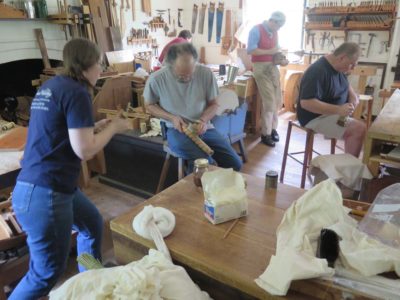

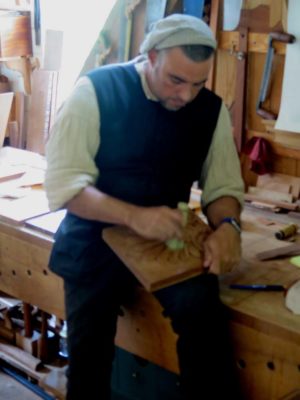
The preparation for carved surfaces is essentially the same as flat surfaces; good tool work followed by scraping as necessary, and finally burnished with a bundle of fibers.
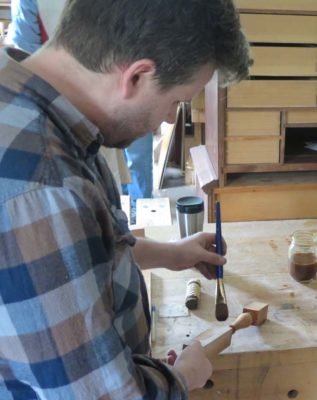
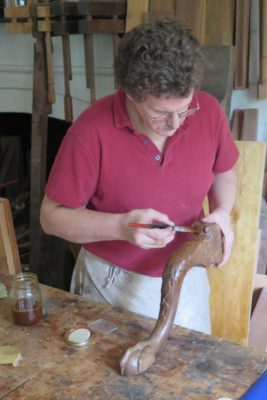
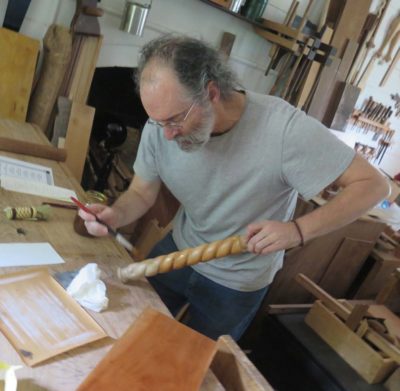

After that it’s simply a matter of applying the varnish by brush, and not too surprisingly this crew tool to this like a fish to water.
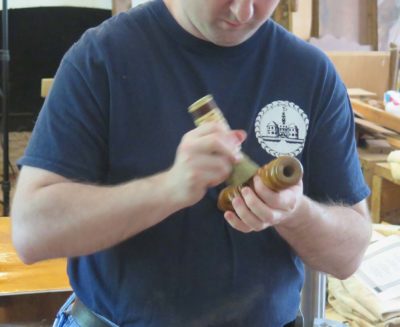
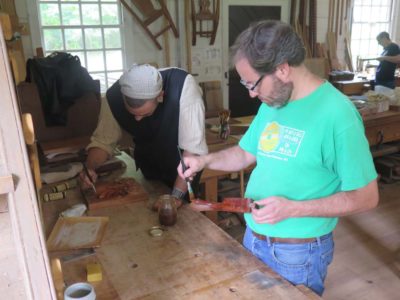
After the initial application dries, the surface can once again be burnished with the carver’s polissoir, a tool I designed for my broom-maker to fabricate along with all the other polissoirs he makes for me. This was followed by second round of varnishing, and the pieces were ready to be rubbed out with beeswax and rottenstone (grey Tripoli).


Join the Conversation!